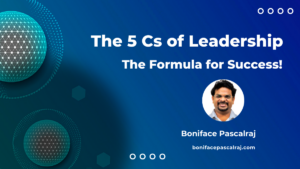Phanidara Sama was an engineer working with M/s Texas Instruments, Bengaluru. His family was residing at Hyderabad and he used to travel on weekends and holidays to meet his family at Hyderabad. The local travel agent used to arrange him a ticket to travel. The local agent has contacts with a few bus service providers who operate buses.
Once during the eve of Deepavali in 2006, naturally, Phanidara Sama wanted to go to Hyderabad to spend the festival with his family and contacted the usual travel agent. To his surprise, the travel agent could not get him a ticket in spite of contacting quite a few bus operators. He tried his best by contacting several other travel agents. But alas! None of them was able to secure him a ticket and he was forced to spend that Deepavali holidays alone in Bengaluru. How horrible he should have felt when his peers and the whole country were enjoying with their families and he had to spend alone the entire holidays.
He also felt so bad that he was not able to find any technological solution to this problem and pondered over in finding a solution. The thought that had he been approached an additional booking agent, he might have assured him a ticket. He wondered what if there was a place where he could see the available tickets at one place. This led to the creation of a successful startup, redbus.com, an online ticket booking platform which aggregates several bus operators and helps travellers to book tickets with ease and well in advance.
The rationale behind the birth of redbus.com
The redbus.com was started to solve the problem of difficulty in booking tickets. Phanidar Sama clearly identified the pain area and offered a solution to the problem.
The example of redbus.com‘s origin is a classic example of how to find an idea. The easiest way to arrive at an idea is to find the solution to an existing problem or pain that has not been resolved. Whenever there is a pain, medicine is needed to alleviate the pain. Similarly, there are several problems that are unsolved around us. Finding an amicable solution will help in solving the problem which may prove to be a great business idea.
Idea Generation
Any startup starts from an idea. It is very important to convert an idea into an economically viable business. Ideas are essential to start a business. If you are still wondering, how to generate an idea, look around your surroundings, there will be numerous problems that need a solution. Some may be age-old unsettled problems. Try to identify such problems and make out the ways to bridge the gap between the problem and the solution.
Is it all fine, if you have found the idea? An idea is just a beginning. The idea has to be validated for economic viability and scalability. An idea can be tremendous, even the product based on the idea can be developed very well. However, there should be customers to buy the product. Unless there are paying customers, no idea or product, how fabulous they may be, will ever succeed. In short, the product should be useful to the target customer. This is why it is very important to identify the problem and create an appropriate solution. There may be existing solutions to the problem you are addressing. Check how the current solutions are faring among the target market. If the existing solutions are working fine, then what is the need for your solution? Or can your solution be much better than the existing solutions? Further, there might be others who have identified similar solutions as yours. An idea being unique is very rare. Moreover, just having an idea doesn’t guarantee success. Execution is the key to success. A good idea with bad execution will never be successful.
Evaluation of the idea
Self-evaluation of an idea is very easy as it can be done by you. Think about all the ways why the idea may not succeed. By brainstorming, you would end up either refining the idea further or finding that the idea may not work out successfully. However, many of us may tend to think only positive things about our ideas and may tend to ignore the negatives. Hence it is very important to get feedback from others.
It is worth to share your ideas with the right people and get it validated. The fear that your idea will be stolen is basically unnecessary as execution matters rather than a mere idea. The right people include experienced persons in the same industry or similar industry, prospects (potential customers and consumers), seasoned entrepreneurs, and peers in the same or similar industry. You should not be surprised if most of the people who you ask to validate your idea say that your idea may not work. There are two aspects, one they may be correct provided having a fair amount of knowledge about your industry and generally about business. They may be also incorrect at a very few times. There are successful entrepreneurs who faced resistance or were looked down for their ideas in the beginning. This is why it is important to select the right people to validate your idea. Of all those people mentioned above, prospects are the most important set of people to understand as they are the one who will be turning into customers and consumers.
Understanding the behaviour of the prospects
Prospects are potential buyers and users of your product. It is very important to understand the behaviour of the consumers and expect the customers to come up with an economically viable idea. A better understanding of them may reveal their unsatisfied needs and wants. Anyone who is interested to take entrepreneurship needs to have an idea that is tested and viable. The idea that is generated has to be converted into a product which can be either goods or service. It is important to test the idea before making it commercially available. To ensure whether the idea is viable or not, it is very important to find out the exact needs of the customer, the consumer and understand the reason behind the need.
Who are the consumers and the customers?
The terms, consumer and customer may appear to be same. However, there is a slight difference between the two. Consumers are those who actually use the products, whereas customers are those who buy the product. The customer and consumer, both may be the same person, but it may not be the same in all cases. For example, parents may decide which school their kid should join. Here the parents are the customers while the kid is the consumer. There may also be a series of decision-making processes involved in making a buying decision.
Usually, in B2B sales, the consumer and customer may be different persons. A manufacturing company may regularly purchase raw material from a particular vendor. The actual user of the raw material may be the technician who is working at the shop floor, though s/he may not deal directly with the seller. The purchase manager may be the one who contacts the seller and makes the procurement. Here the technician is the consumer, whereas the purchase manager is the customer.
There may be a series of people involved in a buying process who are usually classified into five categories as follows.
- Initiator – The one who initiates the purchase or the need for a product
- Influencer – The one who influences others on why to buy a particular product
- Decider – The one who makes the final decision
- Buyer – The one who actually buys
- User – The one who actually uses the product.
The above categories are true for both B2B and B2C startups. The same person may play one or more roles at the same time.
Let us look at the decisions involved in buying a tricycle for a kid. The grandmother may initiate the topic and ask the kid’s father to buy a tricycle for the kid. The mother influences the father to buy the tricycle and the father who finally makes the decision to buy is the decider. Then the mother along with the kid go to the shop, decide the colour, size, etc while making the purchase and thereby becoming buyers together. The kid is the ultimate user of the tricycle. To buy a tricycle, there is a whole lot of process and many people are involved. While validating the startup idea, it is important to consider the various people in a purchase decision.
In a B2B scenario, let us consider the scenario of converting the existing lightings to LED lights at a production facility. The director of the company initiates the thought to change the lightings. The maintenance manager influences the decision saying that the LED lights reduce the power bills by at least 50%. The maintenance manager selects the set of prospective sellers. The finance manager decides on the budget for the LED Lights and the purchase manager makes the purchase. The people working at the production facility are the users of the LED lights.
As you see a whole lot of people are involved in deciding a purchase. As an entrepreneur or as a salesperson, you may not be able to interact directly with each one of them. While discussing the viability of the startup idea with the prospects, it is of paramount importance to understand the various people who are likely to be involved in making the purchase.
Understanding customer’s consumer
A bank puts up several ATM units across the country. The bank does not manufacture the ATM units themselves. They outsource the manufacturing and configuration of the machines to a third party. The vendor who is supplying the ATM units should consider the priorities of the bank’s consumers who actually use the ATMs. Hence it is important to consider the needs of the customer’s consumer.
Understanding the psychology of the customer and consumer will help in framing the idea into a better product. Psychological understanding involves finding out the motivation, perception and attitude of the customer behind purchasing the product. It is also important to understand the social behaviour of the customer and consumer. They may behave differently when in a group than when they are alone. Peer pressure may also play a role. So it is important to understand their sociology. The understanding of their spending pattern and their priorities on spending are also equally important while finalising the price range of your product.
Idea is very essential for a startup. An idea can be generated by bridging the gap between the problem and the solution. Validating the idea by speaking to the prospects is very important. While speaking to the prospects it is very essential to find out the various processes and behaviour that the prospect may exhibit while making the purchase. Understanding the prospect’s behaviour will tremendously help in refining the idea to a better shape. Make a distinction between your prospective customer and consumer and make efforts to identify the various people involved in the purchase decision process.
I hope this would have given you a fair idea about generating an idea and the importance of understanding the prospect’s behaviour. If you already have a startup or business running, share your experiences about how you generated the idea and validated with your prospects in the comment section. If not, make an effort to generate an idea and validate with your prospects. If you found this blog post useful, share it with others who may find it useful.



